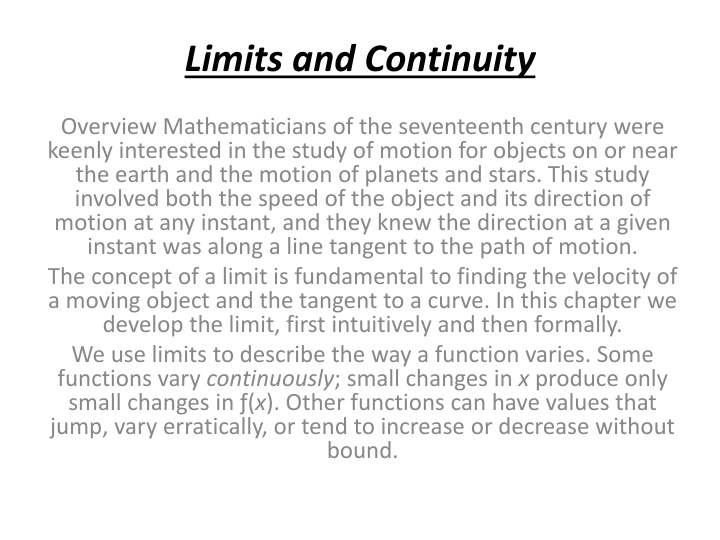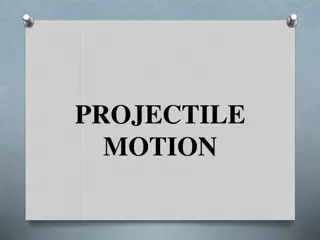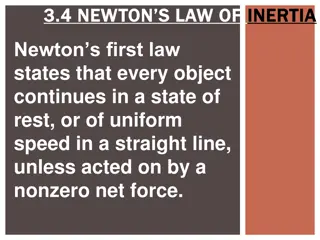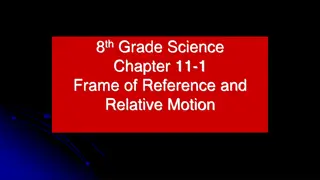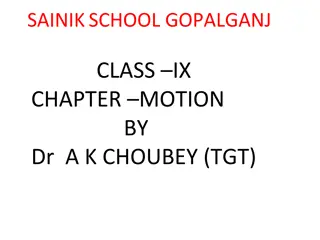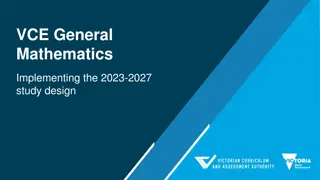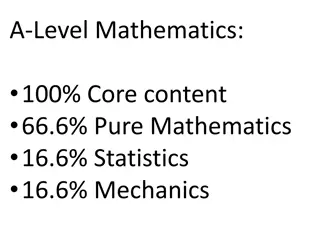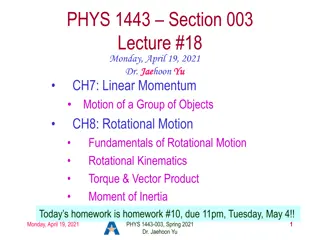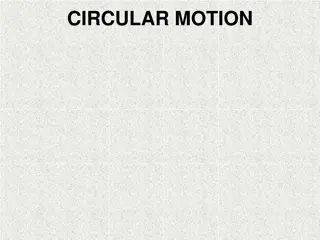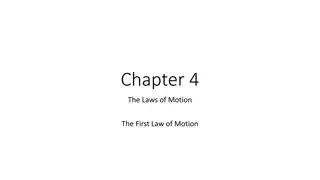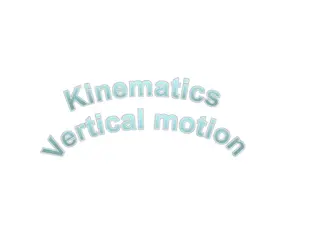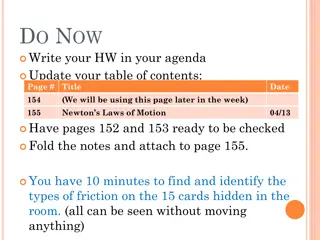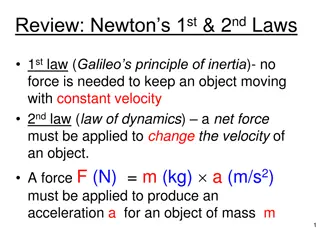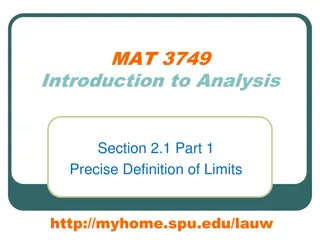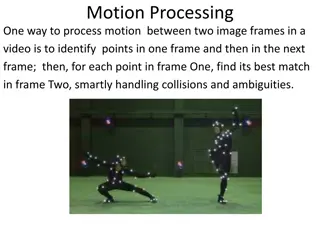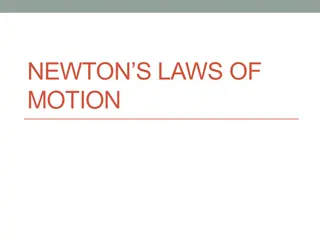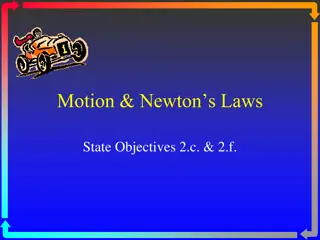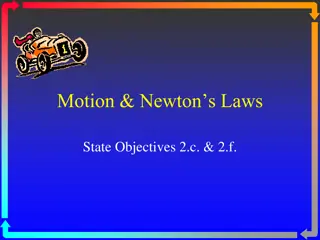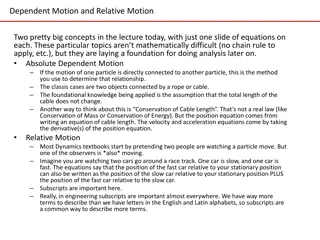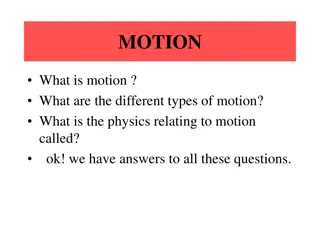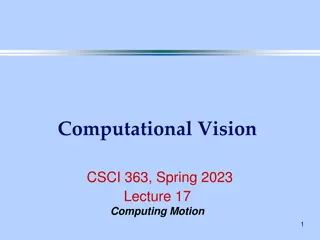Study of Motion and Limits in Mathematics
Mathematicians in the 17th century explored motion of objects on Earth and beyond, utilizing limits to analyze speed and direction. Discover the fundamental concept of limits, their role in finding velocities, and the behavior of functions in this chapter.
Uploaded on Mar 03, 2025 | 0 Views
Download Presentation

Please find below an Image/Link to download the presentation.
The content on the website is provided AS IS for your information and personal use only. It may not be sold, licensed, or shared on other websites without obtaining consent from the author.If you encounter any issues during the download, it is possible that the publisher has removed the file from their server.
You are allowed to download the files provided on this website for personal or commercial use, subject to the condition that they are used lawfully. All files are the property of their respective owners.
The content on the website is provided AS IS for your information and personal use only. It may not be sold, licensed, or shared on other websites without obtaining consent from the author.
E N D
Presentation Transcript
Limits and Continuity Overview Mathematicians of the seventeenth century were keenly interested in the study of motion for objects on or near the earth and the motion of planets and stars. This study involved both the speed of the object and its direction of motion at any instant, and they knew the direction at a given instant was along a line tangent to the path of motion. The concept of a limit is fundamental to finding the velocity of a moving object and the tangent to a curve. In this chapter we develop the limit, first intuitively and then formally. We use limits to describe the way a function varies. Some functions vary continuously; small changes in x produce only small changes in (x). Other functions can have values that jump, vary erratically, or tend to increase or decrease without bound.
